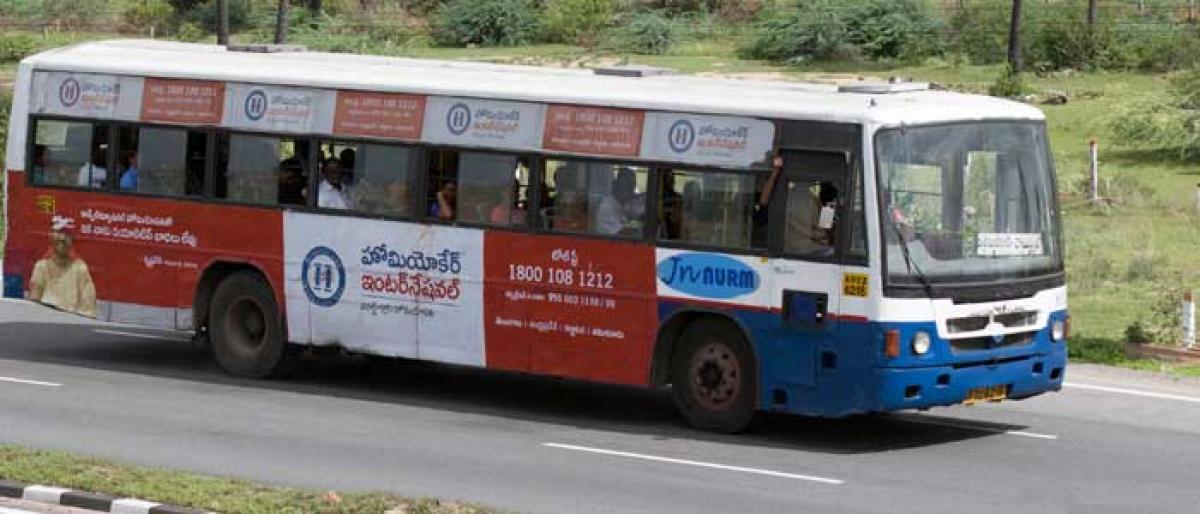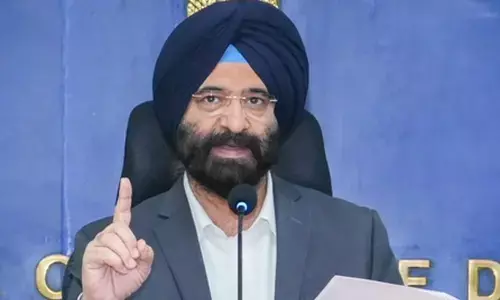Cabs, autos are dime a dozen; RTC in doldrums

All advancement in public transport system, though came as a great relief for commuters, seems to be posing a huge challenge to the already struggling State-run Road Transport Corporation (TSRTC).
Hyderabad: All advancement in public transport system, though came as a great relief for commuters, seems to be posing a huge challenge to the already struggling State-run Road Transport Corporation (TSRTC).
With stiff competition from share cabs, autos and other modes of transport including online cab facilities, the Greater Hyderabad Zone of TSRTC faced losses to the tune of over Rs 280 crore during the year 2015 alone and it fears greater losses once the Metro Rail services are launched.
The TSRTC management has been trying to overcome the losses but because of fierce competition from various cab operators who introduced services like share cabs and share autos and increased the number of individual vehicles, the occupancy ratio in the Greater Hyderabad Zone has been registering a fall.
According to sources, the occupancy ratio of city buses has come down drastically during the last two years. According to officials, the occupancy ratio in the RTC used to be 72 per cent before 2010. During 2013, the occupancy ratio fell to 67.80 per cent and during 2014-15 it further fell to 65.96 per cent. During 2016-17 it was just 67 per cent.
The RTC management has completely failed to take measures like identifying new bus routes as per the needs of the people. Many colonies have come up on the outskirts of the city. While the private transport facility was available for them, there was no RTC service, said a retired RTC personnel. The RTC is yet to introduce even one single new bus during the last three years in the city showing the apathy of the officials on getting more revenues.
Recently, the TSRTC Chairman S Satyanarayana said 32 depots in the State had come into profits and the corporation was striving to bring most of the depots into profit mode. However, the situation of Greater Hyderabad Zone has not changed as none of the 29 depots of the Corporation is in profits and the sources said the chances of getting into profit were less unless the government came to their rescue.
There are two regions in Greater Hyderabad Zone with 29 depots and a bus fleet of 3,830 buses including over 200 A/C buses. About 33 lakh passengers travel in RTC buses every day. The income per day is at Rs 3.6 crore and expenditure is at Rs 4.6 crore resulting in a loss of Rs 97 lakh per day.
Sources said by 2016, the total losses of the zone were Rs 289 crore. Most of the depots in the city have been making losses. The highest loss-making depots include Kushaiguda, Midhani, Falaknuma, Uppal, Ranigunj-1 and 2, Cantonment, Mehdipatnam, Kukatpally, Hakimpet and others.
Greater Hyderabad Zone ED A Purushottam Naik said the low productivity in terms of vehicle utilisation was one of the reasons for losses. He said for instance a bus, on an average, runs for 400 km but in city, it runs only for 200 km. The wage cost is also high compared to rural areas as the city workers needed to be given 30 per cent HRA. In the rural area, the HRA is 12.5 per cent.
The official said the fare revision was the only way to overcome the problem but that was not in the hands of the corporation. The GHMC had agreed to give Rs 336 crore for the year 2014-15 but the RTC was yet to receive the money, added the official.















